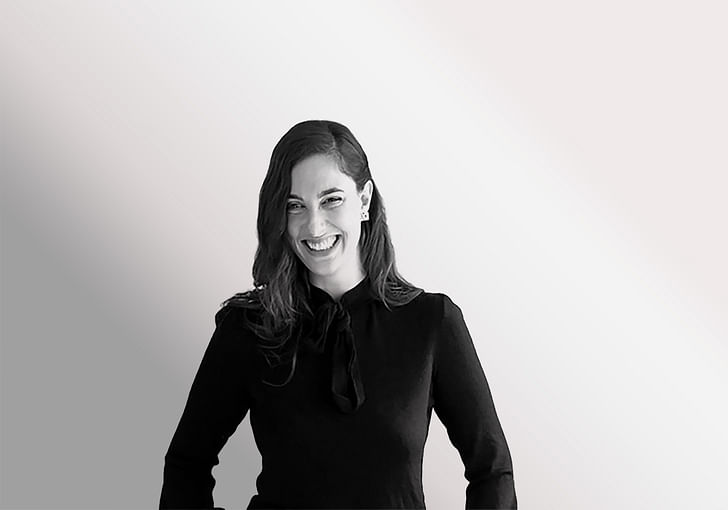

For our latest Studio Snapshot, Archinect had the pleasure of connecting with Anya Moryoussef, Founding Principal of Toronto-based firm AM_A and this year's recipient of the RAIC Emerging Architect Award. Her design work impresses with gorgeous clarity, awareness of material interplay, consistently conveyed through warm, minimalist tones.
The conversation touched on the team's collaborative nature, the intention to keep the studio small, and the challenges of scoring bigger, public commissions for emerging practices in Canada.
Can you tell us how AM_A was founded?
I wanted to work for myself. I like having my hands in everything.
How many people are currently employed at your studio? How is your office structured?
There’s me, James Swain, and Artur Kobylanski. We're all trained architects who can run our own projects, but we design collaboratively. I’m also collaborating with MMX YYZ Architecture out of Malmö on an exciting public commission. Collaborating with others means we can stay intimate but also take on different kinds of projects. It's also a way to challenge the traditional model of practice.
Would you like to scale up and grow your team? What do you consider the ideal size for your practice?
It's a mandate of AM_A to keep the team small — I don't see us growing beyond 5–6, but even then, not until we can all work in one space again.
Collaborating with others means we can stay intimate but also take on different kinds of projects.
What have been the biggest challenges starting and running your own practice?
We reinvent the wheel with every project because we want to make work that’s original and challenging, and it takes a lot to start from scratch each time. But that’s the only way we know how, and it’s worth it.
Right now, a specific challenge is expanding into the public realm. We’ve been recognized for our design excellence — as have many other small firms — but here in Canada, if you’re young and under a certain size, it's almost impossible to qualify to work on public and institutional projects. The attitude here is: show me what you’ve done, not what you can do. It's conservative thinking that stunts invention, unlike in the UK, for example, where ideas outshine experience.
What challenges have you faced during the past pandemic months? Are you sensing a return to "business as usual" soon?
This past year has been about flexibility, compassion, and dedication. It hasn't been easy, but it's also been a great chance to think about what "business as usual" really means; what we'd like to return to, and what we want to leave behind.
Describe your work. How do you define your own unique style and approach?
We look at each project as an excavation — site, history, client. We get into the idiosyncrasies and make our interventions on the basis of what we find.
[...] here in Canada, if you’re young and under a certain size, it's almost impossible to qualify to work on public and institutional projects. The attitude here is: show me what you’ve done, not what you can do.
Where do you see AM_A in 5 years?
My goal is for us to be as excited about the work then as we are today.
What are some of your favorite new practices you're following in Canada, or Toronto specifically?
In Toronto, we're big fans of ODAMI, AAmp, SOCA Design, Kilogram Studio, and Polymetis. We also follow the work of Leckie Studio in Vancouver, and la SHED and _naturehumaine in Montreal. But that’s just for a start — there are many, many more.
If you could describe your work/practice in three words, what would they be?
We love atmosphere.
Alexander Walter grew up in East Germany with plenty of Bratwurst. He studied Architecture and Media Design at Bauhaus-Universität Weimar, Germany, and participated in foreign exchange programs with Washington-Alexandria Architecture Consortium in Alexandria, Virginia and Waseda University in ...
No Comments
Block this user
Are you sure you want to block this user and hide all related comments throughout the site?
Archinect
This is your first comment on Archinect. Your comment will be visible once approved.